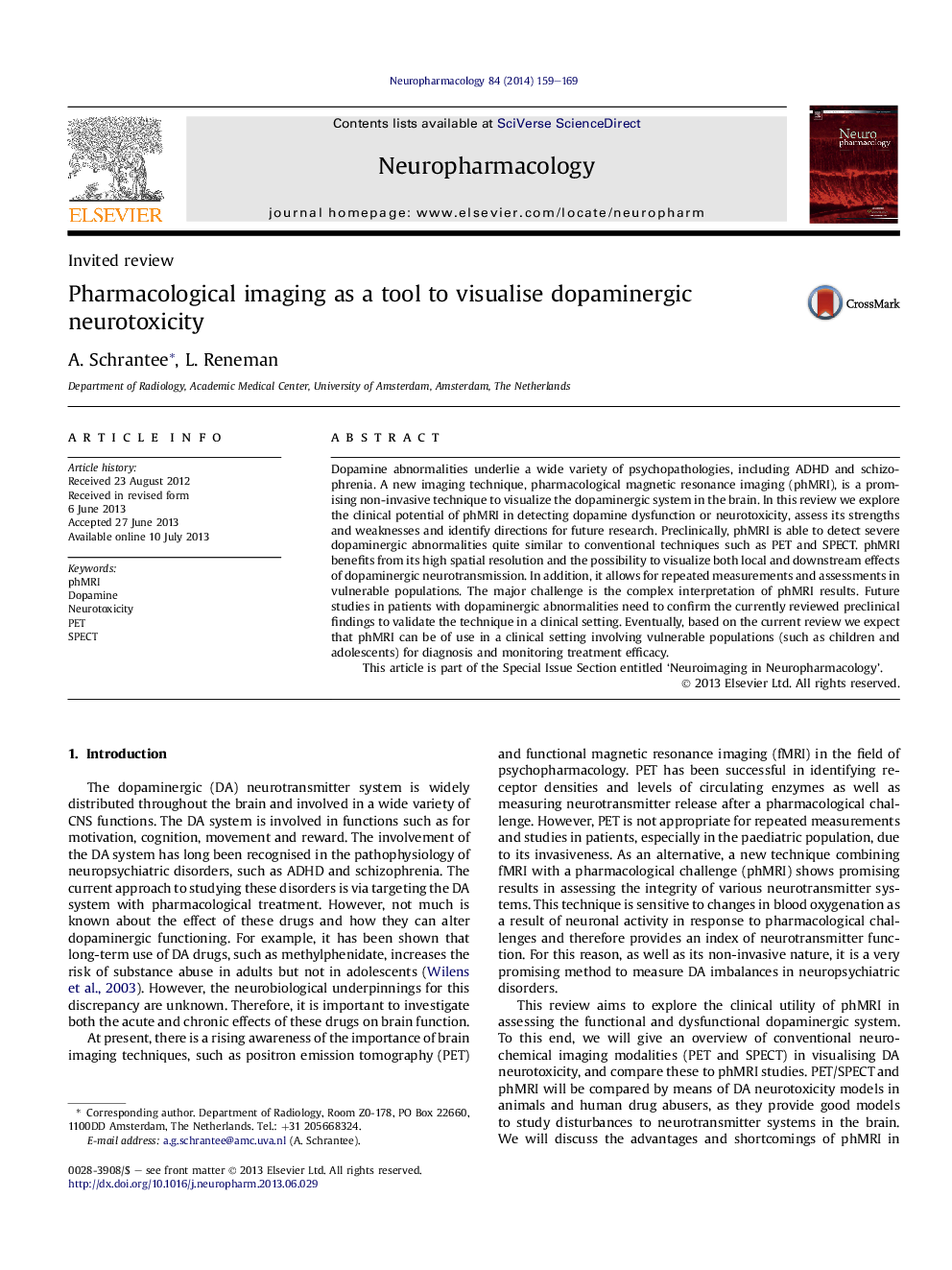| Article ID | Journal | Published Year | Pages | File Type |
|---|---|---|---|---|
| 5814502 | Neuropharmacology | 2014 | 11 Pages |
â¢DA phMRI detects severe DA lesions in animals to the same extent as PET/SPECT do.â¢Future studies need to assess if DA phMRI can detect moderate dopaminergic lesions.â¢Patients need to be studied with DA phMRI before introduction in clinical practice.â¢In a non-invasive way, DA phMRI can provide insight in neuropsychiatric disorders.â¢DA phMRI can become a powerful tool for diagnosis and treatment monitoring.
Dopamine abnormalities underlie a wide variety of psychopathologies, including ADHD and schizophrenia. A new imaging technique, pharmacological magnetic resonance imaging (phMRI), is a promising non-invasive technique to visualize the dopaminergic system in the brain. In this review we explore the clinical potential of phMRI in detecting dopamine dysfunction or neurotoxicity, assess its strengths and weaknesses and identify directions for future research. Preclinically, phMRI is able to detect severe dopaminergic abnormalities quite similar to conventional techniques such as PET and SPECT. phMRI benefits from its high spatial resolution and the possibility to visualize both local and downstream effects of dopaminergic neurotransmission. In addition, it allows for repeated measurements and assessments in vulnerable populations. The major challenge is the complex interpretation of phMRI results. Future studies in patients with dopaminergic abnormalities need to confirm the currently reviewed preclinical findings to validate the technique in a clinical setting. Eventually, based on the current review we expect that phMRI can be of use in a clinical setting involving vulnerable populations (such as children and adolescents) for diagnosis and monitoring treatment efficacy.This article is part of the Special Issue Section entitled 'Neuroimaging in Neuropharmacology'.
